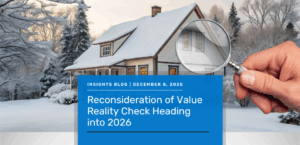Over the last several years, the U.S. housing market has seen a sharp decline in buyer activity. In May from 2016 to 2022 (except 2020), over five million homes were sold at an annualized rate. In contrast, May 2025 saw just four million sales (NAR). This drop is not limited to first-time buyers—repeat buyers are also pulling back from the market. So, where have all the buyers gone?
The Vanishing First-Time Buyer
Let’s begin with first-time homebuyers. According to the National Association of Realtors, there were just 1.1 million first-time buyers in 2024—380,000 fewer than the year before and nearly half of the historical average. These buyers represented only 24% of all home purchases, a significant drop from 32% the previous year.
Most first-time buyers are in their mid-20s to early 40s, and more than 90% of them finance their purchases through a mortgage. The average down payment in this age group is under 15%, and over 30% carry student loan debt, with a median amount of $30,000. These financial realities shape the profile of a typical first-time buyer: limited savings, reliance on financing, and existing debt.
The Affordability Squeeze
Over the past five years, home prices have surged by 55%, rising from a median price of $285,000 to $425,000. (A median price means half the homes sold for more, and half for less.) In contrast, average hourly or weekly earnings have only increased by 20% during the same time-period.
This price-income imbalance is a key factor discouraging first-time buyers, but it’s not the only one. Financing costs have also risen dramatically. In May 2020, mortgage rates stood at 3.25% percent; by 2025, they had doubled to 6.6%. The result? Monthly mortgage payments on a median-priced home jumped from $1,250 to $2,700—an annual increase of over $17,000.
Other necessary expenses have followed a similar trajectory. Homeowners must carry insurance, which has seen a 40% between 2019 and 2024, according to LendingTree. Property taxes, tied to assessed home values, have also climbed. In 2023, the average property tax on a single-family home in the U.S. reached $4,062, up from $3,561 in 2019.
All these factors lead to a higher income requirement for mortgage qualification. A Harvard study estimates that buyers now need to earn $127,000 annually to afford a median-priced home—up from $79,000 in 2021. Yet only six million of the country’s 46 million renters meet this income level.
A new obstacle has also emerged: credit-score declines resulting from resumed reporting of student loan delinquencies. This caused the delinquency rate on outstanding student loans to rise to 8%, disqualifying an estimated 2.4 million borrowers from mortgage eligibility.
For 37% of buyers, debt delayed saving for a down payment by more than five years (NAR). To compensate, many cut spending on non-essential items and entertainment. Still, household finances are simply not adding up for many would-be buyers, leading them to wait—hoping for a drop in either rates, prices, or both.
Repeat Buyers: Staying Put
Repeat buyers typically include older individuals seeking to upsize, move closer to family, accommodate a change in family situation, relocate for work, or downsize after retirement. Despite these reasons, many are opting to stay put.
A major deterrent is the low mortgage rate that many current homeowners enjoy. Approximately half of all homeowners have a mortgage rate below 4 percent. For instance, a $500,000 mortgage at 3% results in a monthly payment of $2,100, while the same loan at 6.6% costs $3,200 per month. This $1,100 difference—along with the costs of moving—makes relocation a financially unattractive option.
Nearly 40% of homeowners do not have a mortgage at all. While this frees them to move without concern for mortgage rates, many choose not to. One reason is the prospect of significant capital-gains tax bills. For example, a median-priced home in Orange County, California was $525,000 in 2010. By 2025, that median had risen to $1.4 million, creating a long-term gain of $875,000. But the IRS exclusion for capital gains tax hasn’t been adjusted for inflation—$250,000 for single filers and $500,000 for married couples filing jointly. The excess gain is taxed, encouraging many to hold onto their homes or pass them on to their children to avoid the tax altogether.
The traditional retirement move to a smaller home is also becoming less common. High costs, limited supply of downsized homes, and rising interest and insurance expenses are keeping older Americans in place. A Redfin study found that 78% of baby boomers plan to remain in their current homes for retirement. Another Redfin report noted that boomers occupy 28.2% of large homes (three bedrooms or more), compared to just 14.2% of millennials.
The Market Stalemate
Historically, home prices have rarely fallen. Since 1991, prices only dropped during the Great Recession (2008–2011) and briefly in late 2022 when mortgage rates spiked. Currently, there is no broad expectation of another crash. Homeowners are financially stable, with more than 40% owning their homes outright. Home equity has soared from $20.1 trillion in Q1 2020 to $34.5 trillion in Q1 2025—a 75% increase in just five years, driven largely by rising prices.
Sellers are in no rush to list at lower prices, and most forecasts—including VeroFORECAST—expect prices to rise modestly by 2%–3% over the next year. At the same time, mortgage rates are projected to remain around 6.5%, offering no major relief for buyers.
What is the way out?
In response to these challenges, some changes are beginning to take shape. Builders are constructing smaller homes. Between 2019 and 2022, the median home size was around 2,300 square feet. That dropped to 2,150 square feet in 2024. These reductions are driven by affordability concerns and a growing demand for more manageable living spaces among both millennials and aging boomers.
However, the benefits of smaller homes are limited. Rising construction costs, potential tariffs on imported building materials from Canada and Mexico, and immigration policies affecting construction labor continue to pressure builder sentiment. As a result, some homebuilders are slowing new construction in specific markets to better align inventory with buyer demand.
Evolving Lifestyles and Creative Solutions
As traditional paths to homeownership grow more difficult, many buyers are adapting in creative ways. Multigenerational living is on the rise, with one in four homeowners in 2024 living in such arrangements. Between July 2023 and June 2024, 17% of home buyers purchased a multigenerational home—up from 14% the year before. Generation X leads this trend, with 21% buying homes suitable for multiple generations.
There’s also increasing interest in accessory dwelling units (ADUs), or “granny flats”—smaller homes built on the same lot as a primary residence. New construction often incorporates flexible designs that allow for both privacy and shared living, including separate entrances and distinct living spaces.
Family financial support is also playing a bigger role. Among Younger Millennials, 33% received help with their down payment in the form of a gift or loan from relatives or friends (NAR). In today’s high-priced housing market, this form of assistance has become more necessity than luxury.
Conclusion: A Shifting Housing Landscape
The U.S. housing market is in a period of transition. First-time buyers are sidelined by affordability issues, while repeat buyers stay rooted due to financial disincentives. As a result, fewer homes are being bought and sold, and housing supply remains constrained. In response, trends like multigenerational living, smaller homes, ADUs, and increased reliance on family support are gaining momentum. While the current landscape may be challenging, it is also one of adaptation and change—reshaping how Americans approach homeownership.

About Reena Agrawal, Senior Research Economist
Reena Agrawal received her PhD in Economics from Vanderbilt University and MA in Economics from The Ohio State University and has several years of industrial experience in economic research and analysis.




